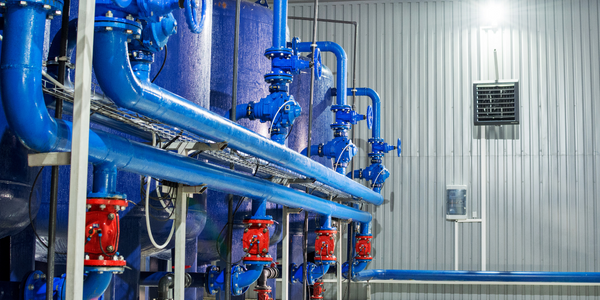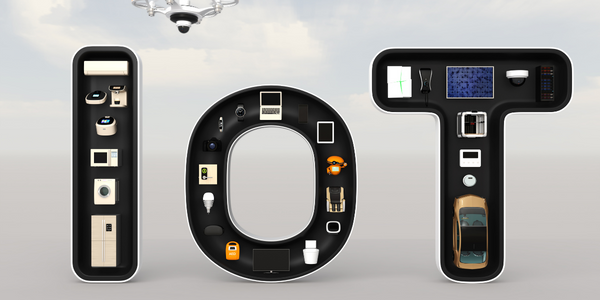Technology Category
- Sensors - Environmental Sensors
- Sensors - Temperature Sensors
Applicable Industries
- Equipment & Machinery
- Transportation
Applicable Functions
- Logistics & Transportation
- Quality Assurance
Use Cases
- Structural Health Monitoring
- Supply Chain Visibility
Services
- System Integration
- Testing & Certification
About The Customer
The customer in this case study is one of the world's largest ice cream manufacturers, with a yearly revenue of over $5.5 billion in the South Asia market alone. The company operates 20 plants in India, serving around 700 million customers with a diverse product portfolio. Each of these plants has several large cold chain-specific warehouses that need to comply with stringent norms. The company also has warehouses in distribution centers that need to adhere to the same compliance norms. The manufacturer was facing challenges in maintaining the storage temperature between -18°C and -25°C in its ice cream supply chain. The company was also dealing with inefficient operations due to a lack of data repositories and fragmented temperature monitoring duties.
The Challenge
The case study revolves around one of the world's largest ice cream manufacturers, with a yearly revenue of over $5.5 billion in the South Asia market alone. The manufacturer was grappling with challenges in its ice cream supply chain, particularly in maintaining the storage temperature between -18°C and -25°C. The company operates 20 plants in India, serving around 700 million customers with a diverse product portfolio. Each of these plants has several large cold chain-specific warehouses that need to comply with stringent norms. The company also has warehouses in distribution centers that need to adhere to the same compliance norms. The manufacturer was using a passive cold chain monitoring system, which was leading to inefficient operations and product spoilage. The passive system, enabled by temperature data loggers, was creating product loss at two places: warehouses and during transit. The company was also dealing with inefficient operations due to a lack of data repositories and fragmented temperature monitoring duties.
The Solution
To address these challenges, the ice cream manufacturer turned to Roambee's real-time cold chain monitoring system. Roambee offers an immersive, location-aware cold chain monitoring solution that can be deployed globally. The solution fits into the manufacturer’s needs with its real-time temperature sensors that offer clean and reliable condition data, along with actionable insight. The AI-powered Roambee solution enabled the manufacturer to counter the problems effectively. The solution offers a range of parameters to track, such as temperature, humidity, shock, light, and tilt. The devices, mounted in the warehouse, register temperature at close intervals and relay the information to the Roambee Cloud. If it registers fluctuations, actionable insights are then sent to the concerned teams for timely course correction. The solution also offers unique network optimization that works in a cold storage-specific warehouse, where connectivity issues are common. The sensors use a GSM Quad Band, with both 2G and 3G compatibility and a GPS signal booster to ensure enhanced transmission capability.
Operational Impact
Quantitative Benefit

Case Study missing?
Start adding your own!
Register with your work email and create a new case study profile for your business.
Related Case Studies.

Case Study
Smart Water Filtration Systems
Before working with Ayla Networks, Ozner was already using cloud connectivity to identify and solve water-filtration system malfunctions as well as to monitor filter cartridges for replacements.But, in June 2015, Ozner executives talked with Ayla about how the company might further improve its water systems with IoT technology. They liked what they heard from Ayla, but the executives needed to be sure that Ayla’s Agile IoT Platform provided the security and reliability Ozner required.

Case Study
IoT enabled Fleet Management with MindSphere
In view of growing competition, Gämmerler had a strong need to remain competitive via process optimization, reliability and gentle handling of printed products, even at highest press speeds. In addition, a digitalization initiative also included developing a key differentiation via data-driven services offers.

Case Study
Predictive Maintenance for Industrial Chillers
For global leaders in the industrial chiller manufacturing, reliability of the entire production process is of the utmost importance. Chillers are refrigeration systems that produce ice water to provide cooling for a process or industrial application. One of those leaders sought a way to respond to asset performance issues, even before they occur. The intelligence to guarantee maximum reliability of cooling devices is embedded (pre-alarming). A pre-alarming phase means that the cooling device still works, but symptoms may appear, telling manufacturers that a failure is likely to occur in the near future. Chillers who are not internet connected at that moment, provide little insight in this pre-alarming phase.

Case Study
Premium Appliance Producer Innovates with Internet of Everything
Sub-Zero faced the largest product launch in the company’s history:It wanted to launch 60 new products as scheduled while simultaneously opening a new “greenfield” production facility, yet still adhering to stringent quality requirements and manage issues from new supply-chain partners. A the same time, it wanted to increase staff productivity time and collaboration while reducing travel and costs.

Case Study
Integration of PLC with IoT for Bosch Rexroth
The application arises from the need to monitor and anticipate the problems of one or more machines managed by a PLC. These problems, often resulting from the accumulation over time of small discrepancies, require, when they occur, ex post technical operations maintenance.

Case Study
Data Gathering Solution for Joy Global
Joy Global's existing business processes required customers to work through an unstable legacy system to collect mass volumes of data. With inadequate processes and tools, field level analytics were not sufficient to properly inform business decisions.







